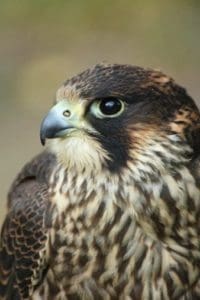 |
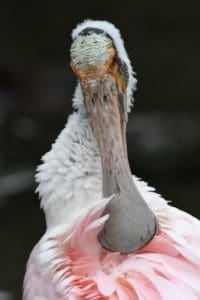 |
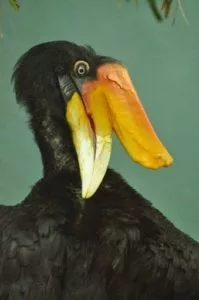 |
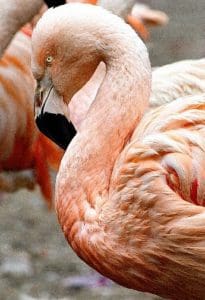 |
Birds possess an astounding array of beak sizes and shapes uniquely adapted to suit their needs. Beaks must be able to help secure food, preen feathers, help build a nest, and in some species, even build simple tools (check out the New Caledonian Crow!). While the beak might appear to be a static structure at first glance, it is actually quite dynamic. In humans, only our lower jaw is moveable, whereas in birds both the upper and lower jaws have movement at their connection to the rest of the skull. The outer layer of the beak, which can sport gaudy colors, is made of keratin—the same material as fingernails. This keratin grows continually, though rates of growth vary widely between species. In parrots, the entire upper beak keratin layer (rhinotheca) is replaced in about 6 months!
While all bird species have beaks, today we will focus a bit on parrots. In parrots, a healthy beak is critical to maintaining a happy, well-adjusted parrot.

For most parrots, access to materials for them to chew on allows them to wear down the keratin layer of the beak to a normal length. However, problems with the beak can arise from a variety of causes. Some parrots may have congenital or acquired deformities of the underlying bony structures of the beak which result in a malocclusion (improper alignment) of the upper and lower jaws. Without proper alignment to wear down the beak, and a naturally high rate of new keratin growth on the beak, these beaks can get out of hand fast! One such common beak deformity is “scissor beak” where the upper and lower beak are displaced laterally relative to one another, such as in this green-cheek conure with a previous fracture of the mandible. As you can see with her mid-grooming photo, a lot of extra keratin was safely removed!
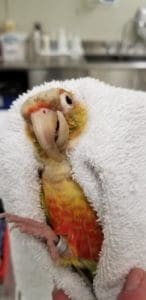
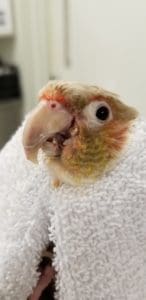
This Moluccan cockatoo has a congenital defect known as “mandibular prognathism,” where the lower beak does not occlude with the upper because it sticks out farther, leading to overgrowth of the upper and lower beak. Proper trimming of the upper and lower beak helps her eat and preen comfortably.


As simple as trimming a beak might seem at first glance, it is crucially important that it be done properly. Even among parrot species, there is tremendous variation in what is considered normal. For example, the beak of this kea appears to be very long at first, however, it is entirely normal for this species!

(Photo courtesy of Dr. Jennifer Campbell-Smith)
Too short a beak trim can cause pain and discomfort, and if severe enough can be permanently disfiguring. In the lower left image, an excessive trim of the lower beak led to permanent disfigurement in contrast to a normal healthy hyacinth at right.
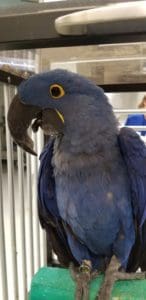
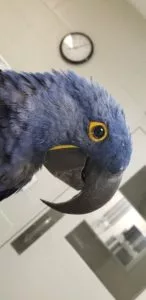
Parrots presented for assessment of their beak will have a thorough physical examination and review of their husbandry performed to evaluate for potential factors contributing to the deformity of the beak. Bloodwork may be done to check for factors that might contribute to excessive rate of beak growth. There is a link between liver dysfunction and excessive beak growth in some birds, such as this lori below.
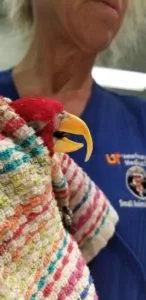
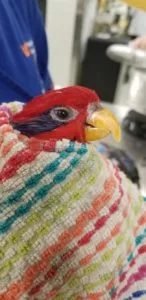
Radiographs or CT scans may be taken to help evaluate the structure of the beak and determine how much of the keratin of the beak can safely be removed and if there are any abnormalities of the underlying bone contributing to abnormal growth. In the radiographs below, a vasa parrot had multiple fractures of the bones of the skull, leading to deviation of the normal structures of the beak. Some patients may need testing for infectious disease, as there are viral and bacterial diseases which can lead to changes in the structure of the beak.
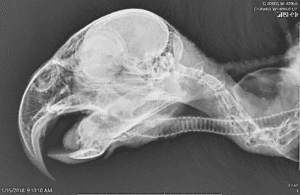 |
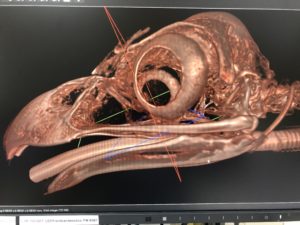 |
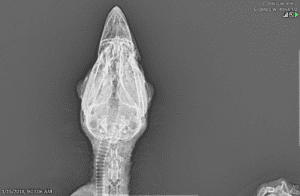 |
For the process of trimming beaks, we often sedate our patients. We commonly give a few drops of sedative medication into the nares (nasal openings), allowing our patients to relax a bit for their “spa treatment”. Beak length is reduced by used of a rotary tool with a grinding tip and dust from this is removed by suction to help keep our lungs (and our patients’ lungs) healthy. Care must be taken not to remove too much of the beak, as there are sensitive nerve endings and blood supply in parts of the beak. In some cases of severe overgrowth, general anesthesia might be needed to safely reshape a beak.
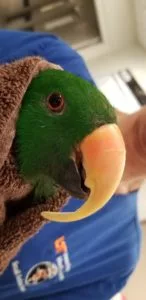
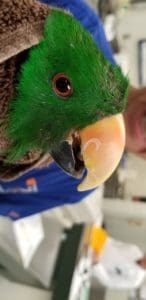
The best way to keep a healthy beak is to feed a healthy, balanced diet and keep a bird busy! Beaks wear down naturally when used, and toys can either be purchased or made at home. In addition to keeping beaks in shape, chewing and manipulating toys provides mental stimulation and helps to prevent boredom. If you’d like some ideas on toys or foraging, please ask us!
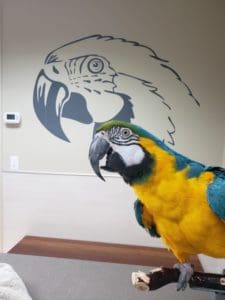
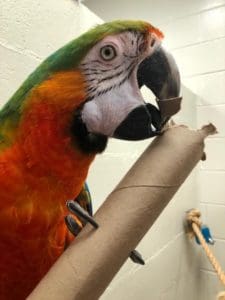

About Us
Our exotic animal hospital is dedicated exclusively to the care of birds, exotic small mammals, reptiles, and even fish! We can offer everything your pet needs for a healthy and happy life, from wellness care and grooming to diagnostics and dentistry, but we can also provide emergency care during our opening hours, along with more specialized treatment for referred patients.
